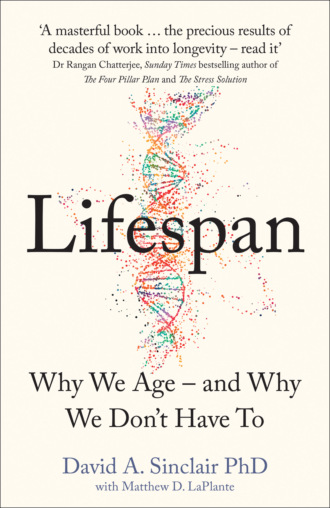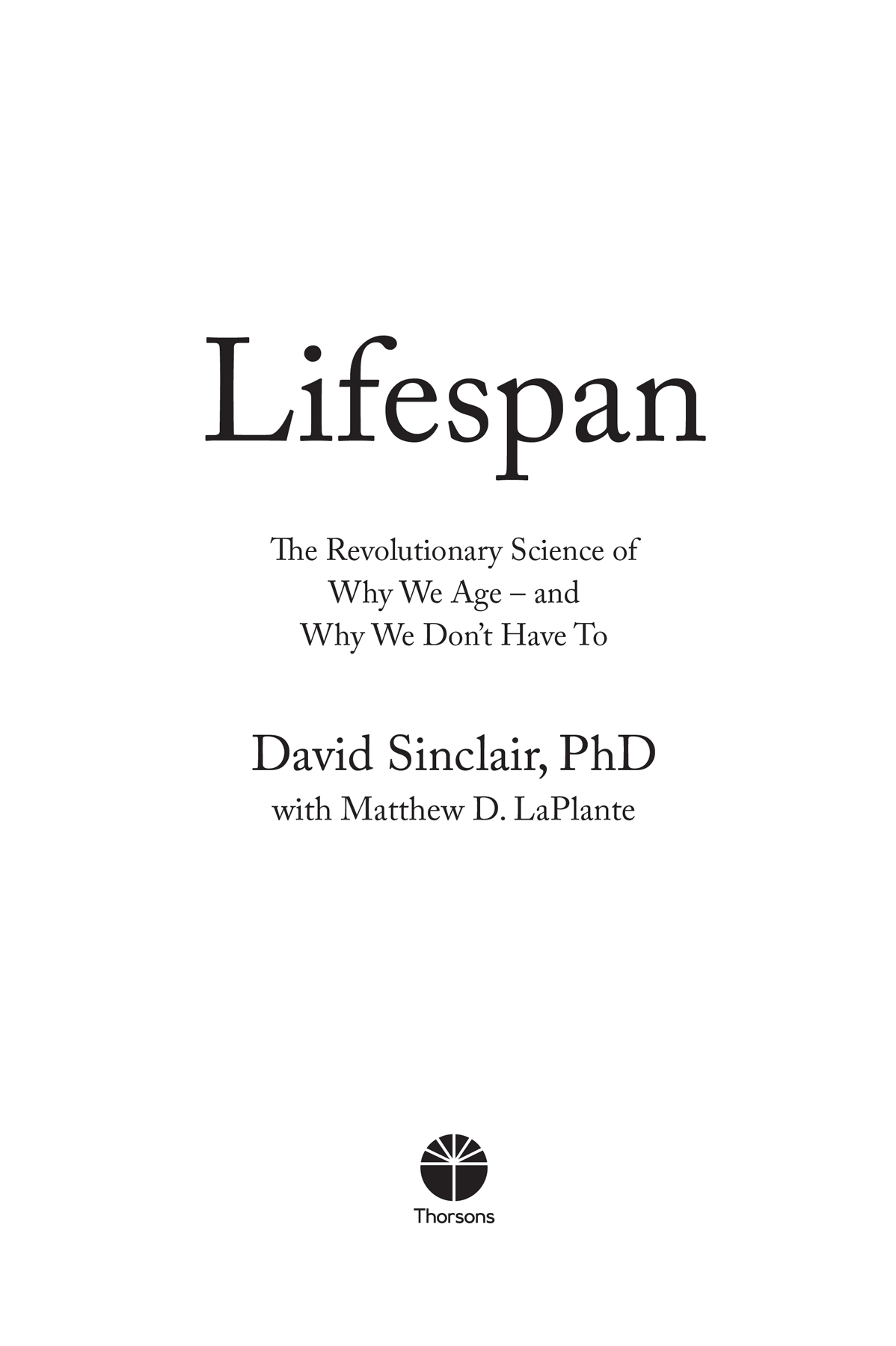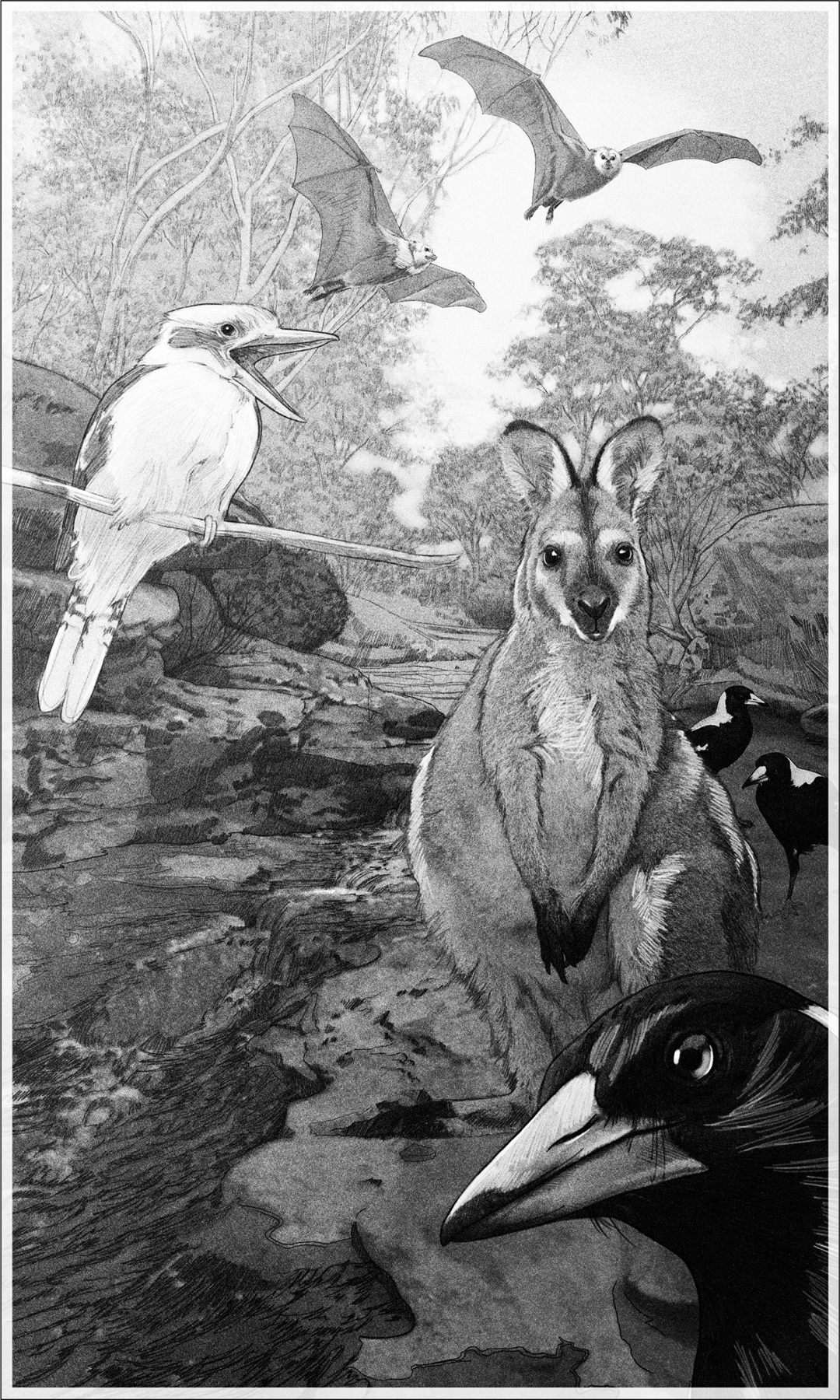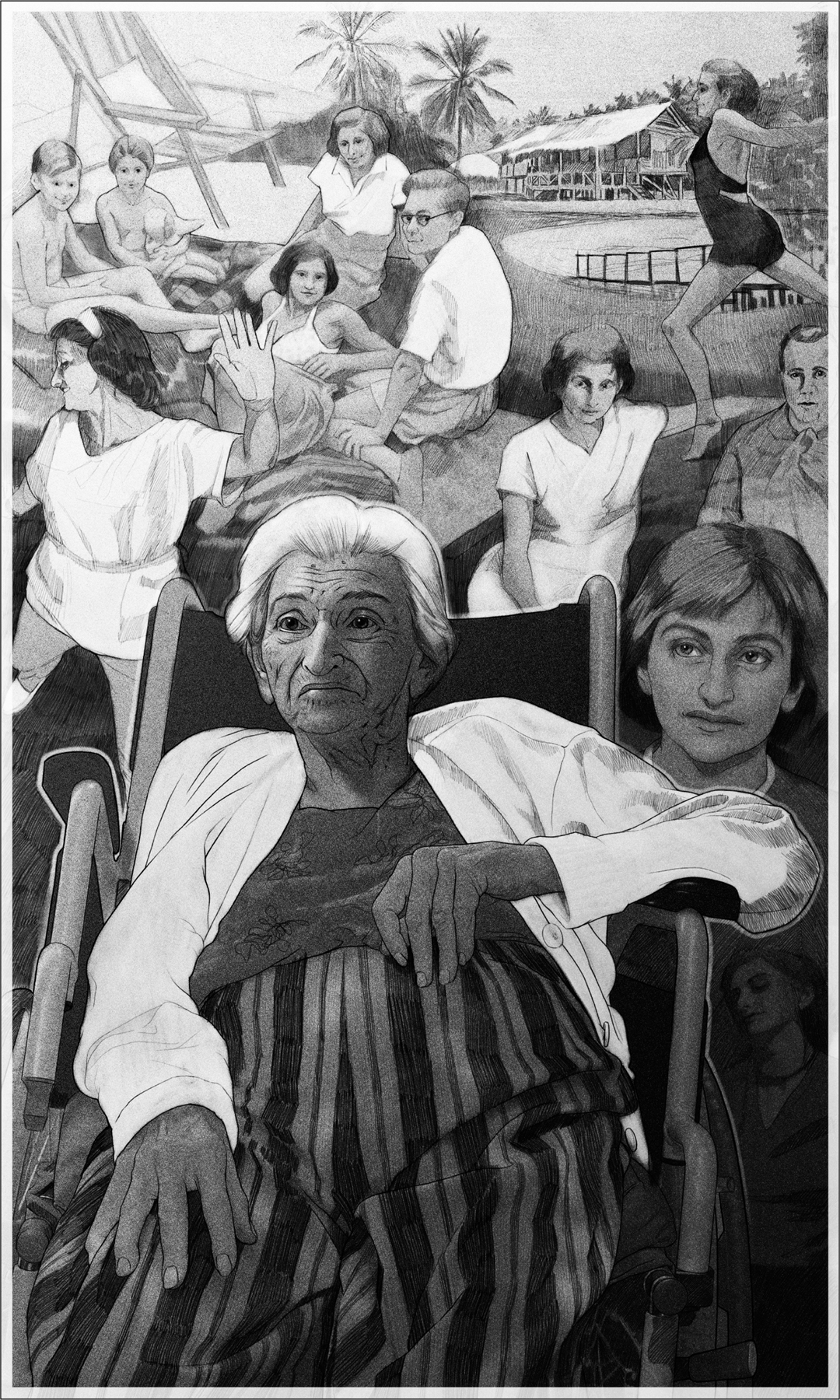
Полная версия
Lifespan


Copyright
Thorsons
An imprint of HarperCollinsPublishers
1 London Bridge Street
London SE1 9GF
www.harpercollins.co.uk
First published by Atria Books, an imprint of Simon & Schuster, Inc.
This UK edition published by Thorsons 2019
FIRST EDITION
© David Sinclair PhD 2019
Cover layout design © HarperCollinsPublishers Ltd 2019
Cover illustration © MGB Watercolor Art 2019
Illustrations and Sinclairfont by Catherine L. Delphia
Illustrations in Cast of Characters by David Sinclair
Thanks to Christine Liu and her team at the Innovative Genomics Institute (IGI) for permission to use the Glossary icons. Thanks to Wikipedia for biographical facts in the cast of characters.
A catalogue record of this book is available from the British Library
David Sinclair PhD asserts the moral right to be identified as the author of this work
All rights reserved under International and Pan-American Copyright Conventions. By payment of the required fees, you have been granted the nonexclusive, non-transferable right to access and read the text of this e-book on screen. No part of this text may be reproduced, transmitted, downloaded, decompiled, reverse engineered, or stored in or introduced into any information storage retrieval system, in any form or by any means, whether electronic or mechanical, now known or hereinafter invented, without the express written permission of HarperCollins e-books.
Find out about HarperCollins and the environment at www.harpercollins.co.uk/green
Source ISBN: 9780008353742
Ebook Edition © October 2019 ISBN: 9780008292362
Version 2019-10-29
Information about External Hyperlinks in this ebook
Please note that footnotes and endnotes in this ebook may contain hyperlinks to external websites as part of bibliographic citations. These hyperlinks have not been activated by the publisher, who cannot verify the accuracy of these links beyond the date of publication.
Contents
Cover
Title Page
Copyright
Dedication
Introduction: A Grandmother’s Prayer
PART I: WHAT WE KNOW (THE PAST)
1. Viva Primordium
2. The Demented Pianist
3. The Blind Epidemic
PART II: WHAT WE’RE LEARNING (THE PRESENT)
4. Longevity Now
5. A Better Pill to Swallow
6. Big Steps Ahead
7. The Age of Innovation
PART III: WHERE WE’RE GOING (THE FUTURE)
8. The Shape of Things to Come
9. A Path Forward
Conclusion
Acknowledgments
Notes
Sinclair Disclosure
The Scale of Things
Cast of Characters
Glossary
List of Searchable Terms
Praise for Lifespan
About the Authors
About the Publisher
Dedication
To my grandmother Vera,
who taught me to see the world the way it could be.
To my mother, Diana,
who cared more about her children than herself.
To my wife, Sandra,
my bedrock.
And to my great-great-grandchildren;
I am looking forward to meeting you.

THE BUSH. In the wild and wonderful world of the Garigal clan, waterfalls and saltwater estuaries wind through ancient sandstone escarpments, under shadowy canopies of charred bloodwoods, angophoras, and scribbly gums that kookaburras, currawongs, and wallabies call home.
INTRODUCTION
A GRANDMOTHER’S PRAYER
I GREW UP ON THE EDGE OF THE BUSH. IN FIGURATIVE TERMS, MY BACKYARD was a hundred-acre wood. In literal terms, it was much bigger than that. It went on as far as my young eyes could see, and I never grew tired of exploring it. I would hike and hike, stopping to study the birds, the insects, the reptiles. I pulled things apart. I rubbed the dirt between my fingers. I listened to the sounds of the wild and tried to connect them to their sources.
And I played. I made swords from sticks and forts from rocks. I climbed trees and swung on branches and dangled my legs over steep precipices and jumped off of things that I probably shouldn’t have jumped off. I imagined myself as an astronaut on a distant planet. I pretended to be a hunter on safari. I lifted my voice for the animals as though they were an audience at the opera house.
“Coooeey!” I would holler, which means “Come here” in the language of the Garigal people, the original inhabitants.
I wasn’t unique in any of this, of course. There were lots of kids in the northern suburbs of Sydney who shared my love of adventure and exploration and imagination. We expect this of children. We want them to play this way.
Until, of course, they’re “too old” for that sort of thing. Then we want them to go to school. Then we want them to go to work. To find a partner. To save up. To buy a house.
Because, you know, the clock is ticking.
My grandmother was the first person to tell me that it didn’t have to be that way. Or, I guess, she didn’t tell me so much as show me.
She had grown up in Hungary, where she spent Bohemian summers swimming in the cool waters of Lake Balaton and hiking in the mountains of its northern shore at a holiday resort that catered to actors, painters, and poets. In the winter months, she helped run a hotel in the Buda Hills before the Nazis took it over and converted it to the central command of the Schutzstaffel, or “SS.”
A decade after the war, in the early days of the Soviet occupation, the Communists began to shut down the borders. When her mother tried to cross illegally into Austria, she was caught, arrested, and sentenced to two years in jail and died shortly after. During the Hungarian Uprising in 1956, my grandmother wrote and distributed anti-Communist newsletters in the streets of Budapest. After the revolution was crushed, the Soviets began arresting tens of thousands of dissidents, and she fled to Australia with her son, my father, reasoning that it was the furthest they could get from Europe.
She never set foot in Europe again, but she brought every bit of Bohemia with her. She was, I have been told, one of the first women to sport a bikini in Australia and got chased off Bondi Beach because of it. She spent years living in New Guinea—which even today is one of the most intensely rugged places on our planet—all by herself.
Though her bloodline was Ashkenazi Jew and she had been raised a Lutheran, my grandmother was a very secular person. Our equivalent of the Lord’s Prayer was the English author Alan Alexander Milne’s poem “Now We Are Six,” which ends:
But now I am six,
I’m as clever as clever.
So I think I’ll be six now
for ever and ever.
She read that poem to my brother and me again and again. Six, she told us, was the very best age, and she did her damnedest to live life with the spirit and awe of a child of that age.
Even when we were very young, my grandmother didn’t want us to call her “grandmother.” Nor did she like the Hungarian term, “nagymama,” or any of the other warm terms of endearment such as “bubbie,” “grandma,” and “nana.”
To us boys, and everyone else, she was simply Vera.
Vera taught me to drive, swerving and swaying across all of the lanes, “dancing” to whatever music was on the car’s radio. She told me to enjoy my youth, to savor the feeling of being young. Adults, she said, always ruined things. Don’t grow up, she said. Never grow up.
Well into her 60s and 70s, she was still what we call “young at heart,” drinking wine with friends and family, eating good food, telling great stories, helping the poor, sick, and less fortunate, pretending to conduct symphonies, laughing late into the night. By just about anyone’s standard, that’s the mark of a “life well lived.”
But yes, the clock was ticking.
By her mid-80s, Vera was a shell of her former self, and the final decade of her life was hard to watch. She was frail and sick. She still had enough wisdom left to insist that I marry my fiancée, Sandra, but by then music gave her no joy and she hardly got out of her chair; the vibrancy that had defined her was gone.
Toward the end, she gave up hope. “This is just the way it goes,” she told me.
She died at the age of 92. And, in the way we’ve been taught to think about these things, she’d had a good, long life. But the more I have thought about it, the more I have come to believe that the person she truly was had been dead many years at that point.
Growing old may seem a distant event, but every one of us will experience the end of life. After we draw our last breath, our cells will scream for oxygen, toxins will accumulate, chemical energy will be exhausted, and cellular structures will disintegrate. A few minutes later, all of the education, wisdom, and memories that we cherished, and all of our future potential, will be irreversibly erased.
I learned this firsthand when my mother, Diana, passed away. My father, my brother, and I were there. It was a quick death, thankfully, caused by a buildup of liquid in her remaining lung. We had just been laughing together about the eulogy I’d written on the trip from the United States to Australia, and then suddenly she was writhing on the bed, sucking for air that couldn’t satisfy her body’s demand for oxygen, staring at us with desperation in her eyes.
I leaned in and whispered into her ear that she was the best mom I could have wished for. Within a few minutes, her neurons were dying, erasing not just the memory of my final words to her but all of her memories. I know some people die peacefully. But that’s not what happened to my mother. In those moments she was transformed from the person who had raised me into a twitching, choking mass of cells, all fighting over the last residues of energy being created at the atomic level of her being.
All I could think was “No one tells you what it is like to die. Why doesn’t anyone tell you?”
There are few people who have studied death as intimately as the Holocaust documentary filmmaker Claude Lanzmann. And his assessment—indeed, his warning—is chilling. “Every death is violent,” he said in 2010. “There is no natural death, unlike the picture we like to paint of the father who dies quietly in his sleep, surrounded by his loved ones. I don’t believe in that.”1
Even if they don’t recognize its violence, children come to understand the tragedy of death surprisingly early in their lives. By the age of four or five, they know that death occurs and is irreversible.2 It is a shocking thought for them, a nightmare that is real.

A “GOOD, LONG LIFE.” My grandmother “Vera” sheltered Jews in World War II, lived in primitive New Guinea, and was removed from Bondi Beach for wearing a bikini. The end of her life was hard to watch. “This is just the way it goes,” she said. But the person she truly was had been dead many years at that point.
At first, because it’s calming, most children prefer to think that there are certain groups of people who are protected from death: parents, teachers, and themselves. Between 5 and 7, however, all children come to understand the universality of death. Every family member will die. Every pet. Every plant. Everything they love. Themselves, too. I can remember first learning this. I can also very well remember our oldest child, Alex, learning it.
“Dad, you won’t always be around?”
“Sadly, no,” I said.
Alex cried on and off for a few days, then stopped, and never asked me about it again. And I’ve never again mentioned it, either.
It doesn’t take long for the tragic thought to be buried deep in the recesses of our subconscious. When asked if they worry about death, children tend to say that they don’t think about it. If asked what they do think about it, they say it is not a concern because it will occur only in the remote future, when they get old.
That’s a view most of us maintain until well into our fifties. Death is simply too sad and paralyzing to dwell on each day. Often, we realize it too late. When it comes knocking, and we are not prepared, it can be devastating.
For Robin Marantz Henig, a columnist at the New York Times, the “bitter truth” about mortality came late in life, after she became a grandparent. “Beneath all the wonderful moments you may be lucky enough to share in and enjoy,” she wrote, “your grandchild’s life will be a long string of birthdays you will not live to see.”3
It takes courage to consciously think about your loved ones’ mortality before it actually happens. It takes even more courage to deeply ponder your own.
It was the comedian and actor Robin Williams who first demanded this courage from me through his portrayal of John Keating, the teacher and hero in the film Dead Poets Society, who challenges his teenage students to stare into the faces of the long-dead boys in a fading photo.4
“They are not that different from you, are they?” Keating says. “Invincible, just like you feel. … Their eyes are full of hope … But you see, gentlemen, these boys are now fertilizing daffodils.”
Keating encourages the boys to lean in closer to listen for a message from the grave. Standing behind them, in a quiet, ghostly voice, he whispers, “Carpe. Carpe diem. Seize the day, boys. Make your lives extraordinary.”
That scene had an enormous impact on me. It is likely that I would not have had the motivation to become a Harvard professor if it hadn’t been for that movie. At the age of 20, I had finally heard someone else say what my grandmother had taught me at an early age: Do your part to make humanity be the best it can be. Don’t waste a moment. Embrace your youth; hold on to it for as long as you can. Fight for it. Fight for it. Never stop fighting for it.
But instead of fighting for youth, we fight for life. Or, more specifically, we fight against death.
As a species, we are living much longer than ever. But not much better. Not at all. Over the past century we have gained additional years, but not additional life—not life worth living anyway.5
And so most of us, when we think about living to 100, still think “God forbid,” because we’ve seen what those final decades look like, and for most people, most of the time, they don’t look appealing at all. Ventilators and drug cocktails. Broken hips and diapers. Chemotherapy and radiation. Surgery after surgery after surgery. And hospital bills; my God, the hospital bills.
We’re dying slowly and painfully. People in rich countries often spend a decade or more suffering through illness after illness at the ends of their lives. We think this is normal. As lifespans continue to increase in poorer nations, this will become the fate of billions of additional people. Our successes in extending life, the surgeon and doctor Atul Gawande has noted, have had the effect of “making mortality a medical experience.”6
But what if it didn’t have to be that way? What if we could be younger longer? Not years longer but decades longer. What if those final years didn’t look so terribly different from the years that came before them? And what if, by saving ourselves, we could also save the world?
Maybe we can never be six again—but how about twenty-six or thirty-six?
What if we could play as children do, deeper into our lives, without worrying about moving on to the things adults have to do so soon? What if all of the things we need to compress into our teenage years didn’t need to be so compressed after all? What if we weren’t so stressed in our 20s? What if we weren’t feeling middle-aged in our 30s and 40s? What if, in our 50s, we wanted to reinvent ourselves and couldn’t think of a single reason why we shouldn’t? What if, in our 60s, we weren’t fretting about leaving a legacy but beginning one?
What if we didn’t have to worry that the clock was ticking? And what if I told you that soon—very soon, in fact—we won’t?
Well, that’s what I’m telling you.
I’m fortunate that after thirty years of searching for truths about human biology, I find myself in a unique position. If you were to visit me in Boston, you’d most likely find me hanging out in my lab at Harvard Medical School, where I’m a professor in the Department of Genetics and codirector of the Paul F. Glenn Center for the Biological Mechanisms of Aging. I also run a sister lab at my alma mater, the University of New South Wales in Sydney. In my labs, teams of brilliant students and PhDs have both accelerated and reversed aging in model organisms and have been responsible for some of the most cited research in the field, published in some of the world’s top scientific journals. I am also a cofounder of a journal, Aging, that provides space to other scientists to publish their research on one of the most challenging and exciting questions of our time, and a cofounder of the Academy for Health and Lifespan Research, a group of the top twenty researchers in aging worldwide.
In trying to make practical use of my discoveries, I’ve helped start a number of biotechnology companies and sit as a chair of the scientific boards of advisers of several others. These companies work with hundreds of leading academics in scientific areas ranging from the origin of life to genomics to pharmaceuticals.7 I am, of course, aware of my own labs’ discoveries years before they are made public, but through these associations, I’m also aware of many other transformational discoveries ahead of time, sometimes a decade ahead. The coming pages will serve as your backstage pass and your front-row seat.
Having received the equivalent of a knighthood in Australia and taken on the role of an ambassador, I’ve been spending quite a bit of my time briefing political and business leaders around the world about the ways our understanding of aging is changing—and what that means for humanity going forward.8
I’ve applied many of my scientific findings to my own life, as have many of my family members, friends, and colleagues. The results—which, it should be noted, are completely anecdotal—are encouraging. I’m now 50, and I feel like a kid. My wife and kids will tell you I act like one, too.
That includes being a stickybeak, the Australian term for someone who is overly inquisitive, perhaps derived from the currawong crows that used to punch through the foil lids of the milk bottles delivered to our homes and drink the milk out of them. My old high school friends still like to tease me about how, whenever they came over to my parents’ house, they would find me pulling something apart: a pet moth’s cocoon, a spider’s curled-up leaf shelter, an old computer, my father’s tools, a car. I became quite good at it. I just wasn’t very good at putting these things back together.
I couldn’t bear not knowing how something worked or where it came from. I still can’t—but at least now I get paid for it.
My childhood home is perched on a rocky mountainside. Below is a river that runs into Sydney Harbor. Arthur Phillip, the first governor of New South Wales, explored these valleys in April 1788, only a few months after he and his First Fleet of marines, prisoners, and their families established a colony on the shores of what he called the “finest and most extensive harbor in the universe.” The person most responsible for him being there was the botanist Sir Joseph Banks, who eighteen years earlier had sailed up the Australian coastline with Captain James Cook on his “voyage round the world.”9
After returning to London with hundreds of plant specimens to impress his colleagues, Banks lobbied King George III to start a British penal colony on the continent, the best site for which, he argued, not coincidentally, would be a bay called “Botany” on “Cape Banks.”10 The First Fleet settlers soon discovered that Botany Bay, despite its most excellent name, had no source of water, so they sailed up to Sydney Harbor and found one of the world’s largest “rias,” a highly branched, deep waterway that formed when the Hawkesbury River system had been flooded by rising sea levels after the last ice age.
At the age of 10, I had already discovered through exploration that the river in my backyard flowed down into Middle Harbor, a branch of Sydney Harbor. But I could no longer stand not knowing where the river originated. I needed to know what the beginning of a river looked like.
I followed it upstream, left the first time it forked and right the time after that, wending into and out of several suburbs. By nightfall I was miles from home, beyond the last mountain on the horizon. I had to ask a stranger to let me call my mother to beg her to come pick me up. A few times after that I tried searching upstream, but never did get anywhere close to the fount. Like Juan Ponce de León, the Spanish explorer of Florida known for his apocryphal quest to find the Fountain of Youth, I failed.11
Ever since I can remember, I have wanted to understand why we grow old. But finding the source of a complex biological process is like searching for the spring at the source of a river: it’s not easy.
On my quest, I’ve wound my way left and right and had days when I wanted to give up. But I’ve persevered. Along the way, I have seen a lot of tributaries, but I’ve also found what may be the spring. In the coming pages, I will present a new idea about why aging evolved and how it fits into what I call the Information Theory of Aging. I will also tell you why I have come to see aging as a disease—the most common disease—one that not only can but should be aggressively treated. That’s part I.
In part II, I will introduce you to the steps that can be taken right now—and new therapies in development—that may slow, stop, or reverse aging, bringing an end to aging as we know it.
And yes, I fully recognize the implications of the words “bringing an end to aging as we know it,” so, in part III, I will acknowledge the many possible futures these actions could create and propose a path to a future that we can look forward to, a world in which the way we can get to an increased lifespan is through an ever-rising healthspan, the portion of our lives spent without disease or disability.
There are plenty of people who will tell you that’s a fairy tale—closer to the works of H. G. Wells than those of C. R. Darwin. Some of them are very smart. A few are even people who understand human biology quite well and whom I respect.



